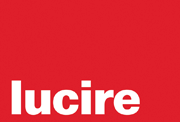|
While Johannesburg has a host of new selling-points
(such as the acclaimed Apartheid Museum and trendy Melrose Arch
quarter), many Cape Town denizens will insist their hub (dubbed
‘The Mother City’) is where much of South Africa’s globally destined
food, fashion and lifestyle trends are taking shape
Kapama Lodge,
Distell’s dwelling of choice for guests and corporate gatherings,
is quintessential safari South Africa. Its cottages are appropriately
comfortable and elegant, yet avoid the trap of jungle kitsch or
blingy décor. Dinners are served open air in a lapa
courtyard with an array of seasonal, simple sides and made-to-order
grilled meats. The well stocked bar also offers Amarula cocktails
and the opportunity to sample snifters of local brandies such as
Richelieu, Klipdrip and Van Ryn, 12- and 15-year-old.
The lodge has decent internet access, but email loses
its urgency when you’re totally surrounded with a serenity
built upon the area’s lush greenery and sprawling river. Though
camping here is hardly “roughing it”, Kapama’s approach
puts you back in touch with nature, right down to nyala antelopes
and monkeys strolling nonchalantly past your cottage, greeting committees
of giraffe and elephants and an astute and youthfully energetic
staff. The lodge’s raison d’être is that
being in such a setting as nature intended is a luxury in itself.
Though you could do Kruger National Park on your own,
guided tours are ideal for shorter stays and eco-tourism virgins.
Game drives conducted by Kapama’s guides in tricked-out Land
Rovers deliver on their promise of genuine thrills and “wow”
moments, ample photo ops and plenty of witty commentary from guides
as they make earnest efforts to ensure you see at least four of
the “big five” (lions, elephants, water buffalo, rhinoceros
and the elusive leopards) as well as other equally interesting specimen
of wildlife. However, this is the jungle, so expect surprises. Our
group delighted in stumbling into a family of cheetahs en route
to the Amarula visitor centre.
The other side of the country, the Western Cape, is
first and foremost known for generations of wine production, quaint
Dutch-flavoured villages and jaw-droppingly gorgeous landscapes
that will take the proverbial breath away (if a hearty lunch and
wine tasting at establishments such as Durbanville Estates doesn’t
do that first).
In nearby Constantia, the Steenberg Hotel and Winery,
in its own way, embodies the new South Africa. Though the resort
itself is relatively new, several of its buildings are certified
historic monuments. Its wines and restaurants are inspired by and
named for key historic events. The suites, décor-wise, have
European underpinnings but are differentiated by the eclectic use
of antiques, local African crafts and delectable beauty products
by Cape Town-based Charlotte Rhys. Catherina’s and tapas-and-tasting-focused
sibling Bistro Sixteen 82 are subtly modern and showcase the Cape’s
local produce beautifully.
Stellenbosch, meanwhile, merits a day trip on its own,
especially if eclectic interior design shops and high concept fine
dining are your thing. The Big Easy is a lovely embodiment of South
Africa’s interior design and foodie chic, and serves up superb
fish cakes, steaks and salads, along with the kind of ambiance that
may prompt you to paint a wall in your own home a bold red, gold
or green and take your collection of paintings or antique flea market
finds out of storage. Durbanville
Hills’ winery and restaurant is another perfect place
to drink in the splendour of Cape Town’s Winelands with all
one’s senses involved.
While Johannesburg has a host of new selling-points
(such as the acclaimed Apartheid Museum and trendy Melrose Arch
quarter), many Cape Town denizens will insist their hub (dubbed
‘The Mother City’) is where much of South Africa’s
globally destined food, fashion and lifestyle trends are taking
shape. Though the central business district at press time could
be described as a diamond in the rough thanks to construction, it
is nonetheless a brilliant diamond. Its mingling of people from
all backgrounds is at once a crowning achievement of Robben Island
“university’s alumni” and an afterthought.
Nowhere is the realization of this dream more apparent
than at this past February’s Design
Indaba 2011, which conveniently put the country’s best
clothing, jewellery and home décor designers under one roof,
all spinning European, African and even Indian æsthetics into
fashion statements that were fresh and very desirable. During the
rest of the year, fashionistas will be able to suss out these cool
finds at the city’s go-to Long Street boutiques (Mememe, Mungo
& Jemima, David West, Merchants on Long) and nearby interior
design havens (Church, Avoova, Imagenius, Still Life).
Though there are many high-end African craft and jewellery
emporiums around the city, street markets like Greenmarket Square
are well worth perusing for both their people-watching and souvenir-hunting.
Though foodie spots at all price points abound, Heritage Square
is where most of the most buzzed about eateries like Savoy Cabbage
and HQ are situated. Adderly Street
and St George’s Mall bring together an eclectic mix of local
department stores and craft stands.
However, venture away from the CBD
and you will be richly rewarded. While Camps Bay and Sea Point are
reminiscent of similar beach-y stretches like Bondi, Ipanema and
Venice Beach, they are quintessentially South African, thanks to
the locals who frequent them.
Though the Victoria & Albert Waterfront, in contrast,
is one of the more unapologetically touristy areas in Cape Town,
the fact that its restaurants and shops are strongly supported by
residents says a lot. For example, Fiona Sacks, who accompanied
me on my visit to the Jewish Museum, recommended Willoughby &
Co. for sushi. In spite of a very “restaurant chain”-sounding
name, the line to get in told me everything I needed to know, and
the sushi was drop dead delicious. Col’ Cacchio, around the
corner from my well appointed apartment hotel (Protea
North Wharf), was a part of a national chain, but had the soul of
a neighbourhood Italian bistro, with a clientèle of all ages.
The same also goes for the Pride and the Glory and &Union,
which stand as leaders in the craft beer and cocktail scenes. The
same goes for Bascule, an outstanding whisky bar based at the Cape
Grace Hotel (reportedly Bill Clinton’s lodging of choice).
Other essential destinations include Kirstenborsch Botanical
Gardens, the Company Gardens and Table
Mountain, places where past and present converge, and with great
style and humanity as people from all backgrounds, races and persuasions
mix and mingle. No matter where you go in the new South Africa,
the whole world is literally watching—whether or not there’s
a football or rugby game on. •
For more information on South Africa, visit www.southafrica.net,
and for information on flights into South Africa, visit www.flysaa.com.
Elyse Glickman is US west coast editor of Lucire.
|  |
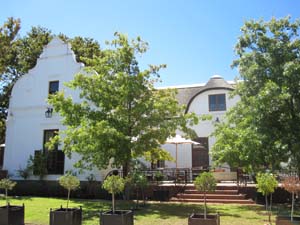
Stellenbosch
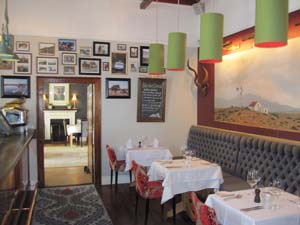
The Big Easy
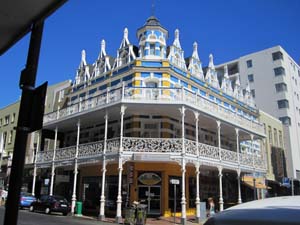
Long Street
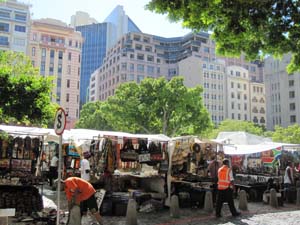
Greenmarket Square
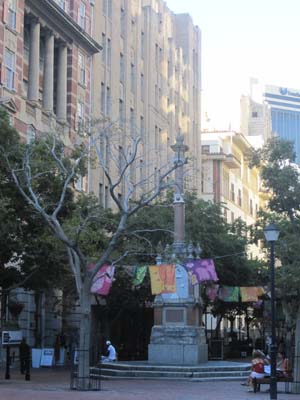
Adderly Street
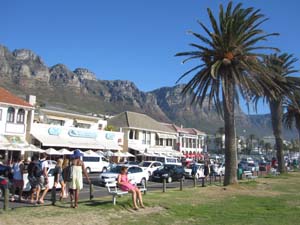
Camps Bay
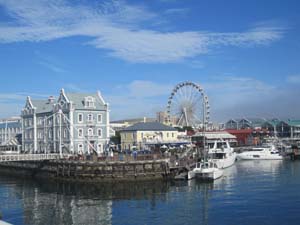
V&A waterfront
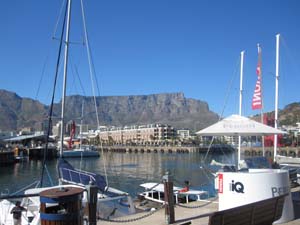
Table Mountain from the V&A waterfront
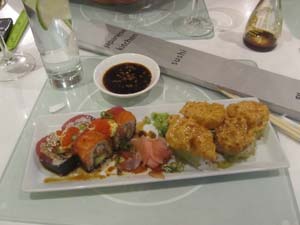
Sushi at Willoughby & Co.
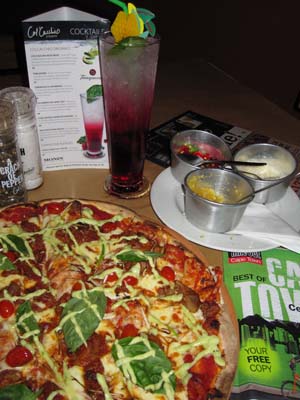
Pizza at Col’ Cacchio

&Union
|
